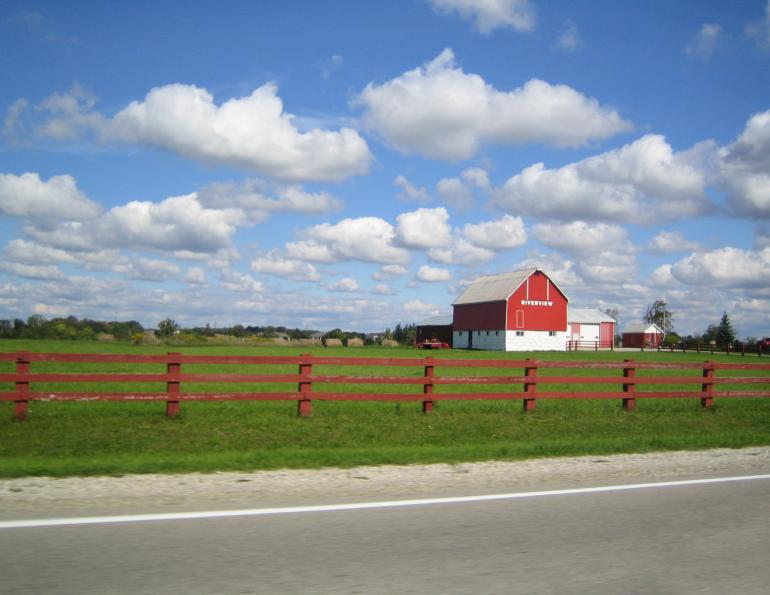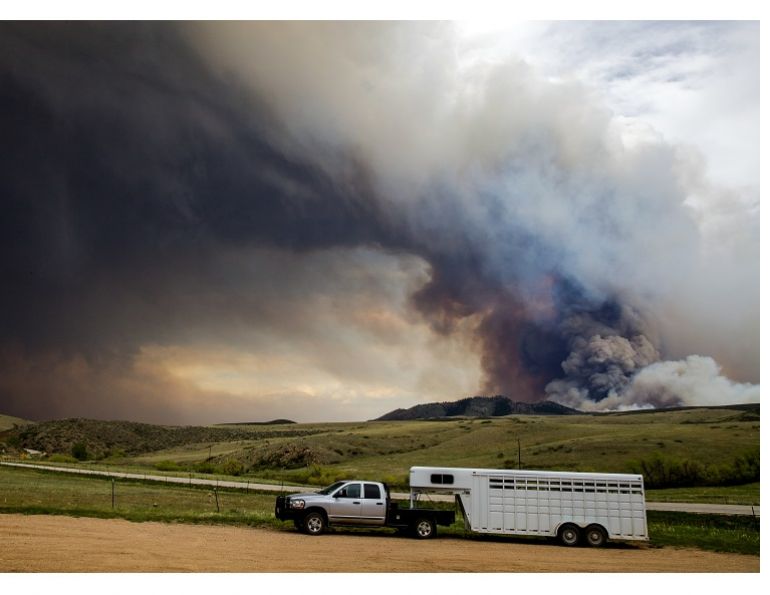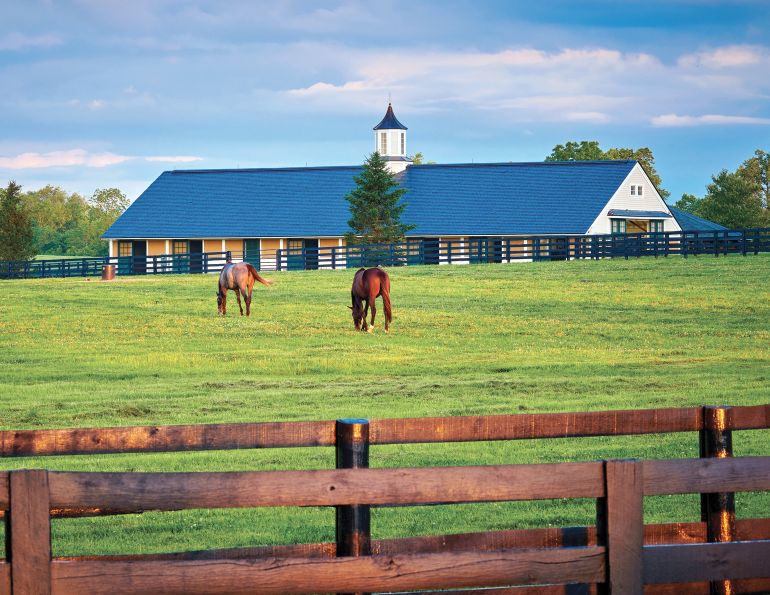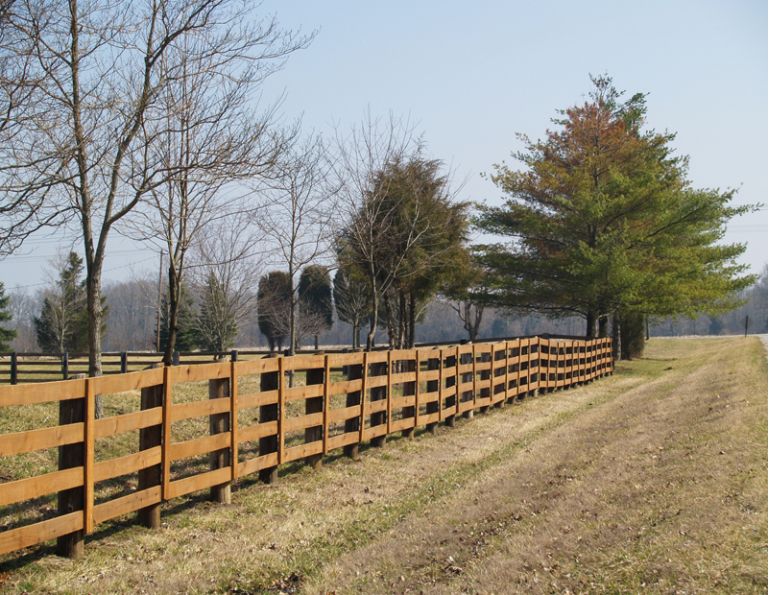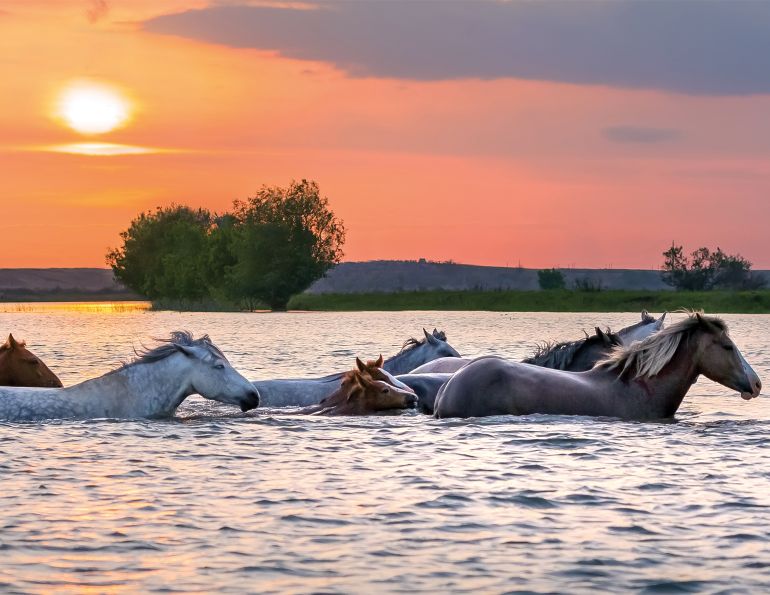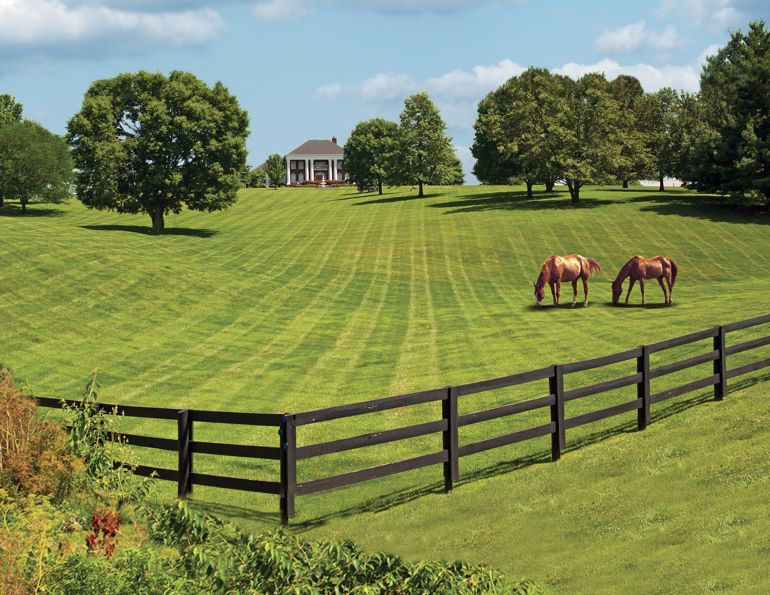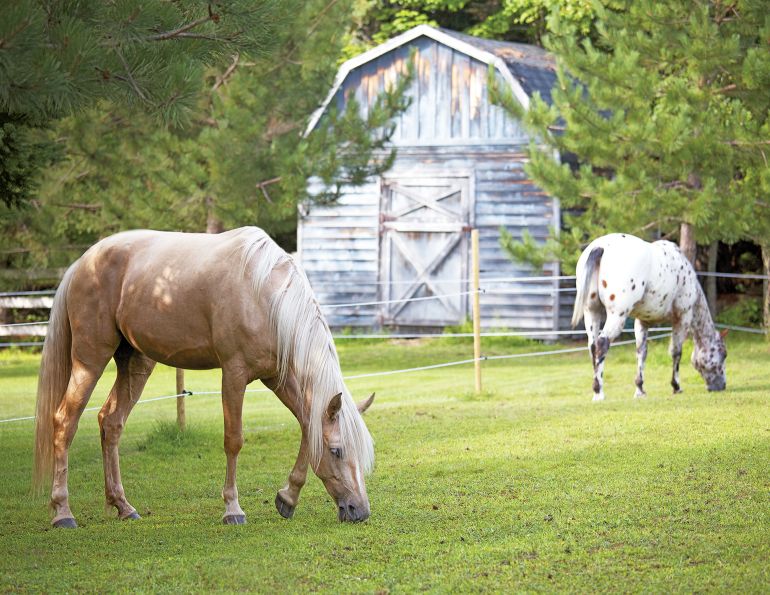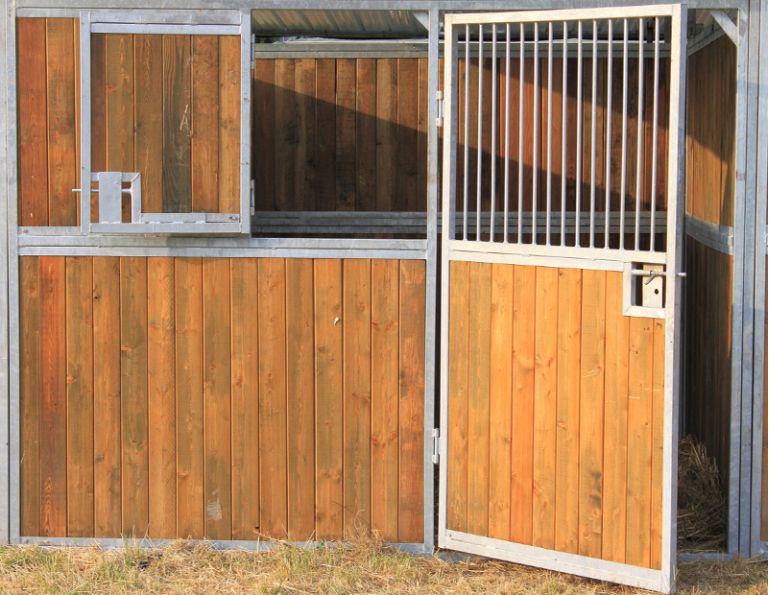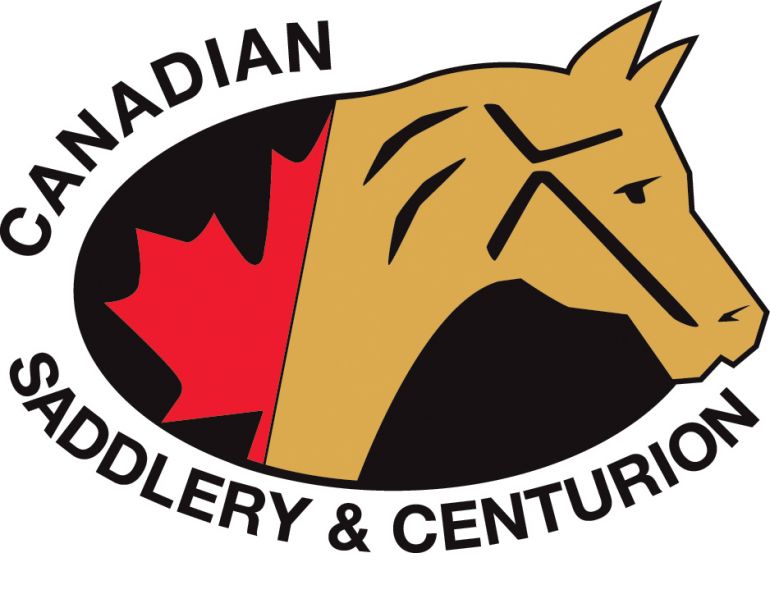By Margaret Evans
Everyone everywhere is finding ways to go green and for horse owners that includes the barn. After all, going green should mean going lean on the pocketbook no matter whether it’s an eco-home or a hayshed. Trendy or basic, the goal is the same: lower greenhouse gas emissions and benefit from cost savings.
Directly or indirectly, everything from a backyard stable to a show barn is a huge energy consumer with a hefty carbon footprint. Almost everything needed to run a barn comes from somewhere else starting with the most fundamental: feed and bedding. Hay, grains, straw, and shavings are trucked from prime agricultural regions. Supplies, equipment, trucks, trailers, machinery, tack, blankets, clothing, and accessories are all transported from elsewhere with fuel costs so daunting that long distance haulers are implementing surcharges.
Like all sectors of the Canadian economy though, the equestrian industry is being swept up in a profound revolution to change the way we do business and how we enjoy our horses. Never before have people been so environmentally aware of the impact contemporary living has had on the health of the planet. Many want to do their part to lighten their carbon footprint and horse owners are no different. After all, many are already close to the natural world and greening the barn helps to give back to the planet that much more. The best thing is that it isn’t hard.
Getting started
Get started with a simple energy analysis. How much energy does your barn use? Try putting together an inventory of all the ways that your barn consumes power. Include lighting, heating, fans, power tools, water pumps, and any other kinds of equipment that use fuels. Then explore ways to reduce energy consumption for each one. Keep your plans practical by setting out a timeline for things that you can do right away, things to do within six or twelve months, and those that require long-term planning and investment.
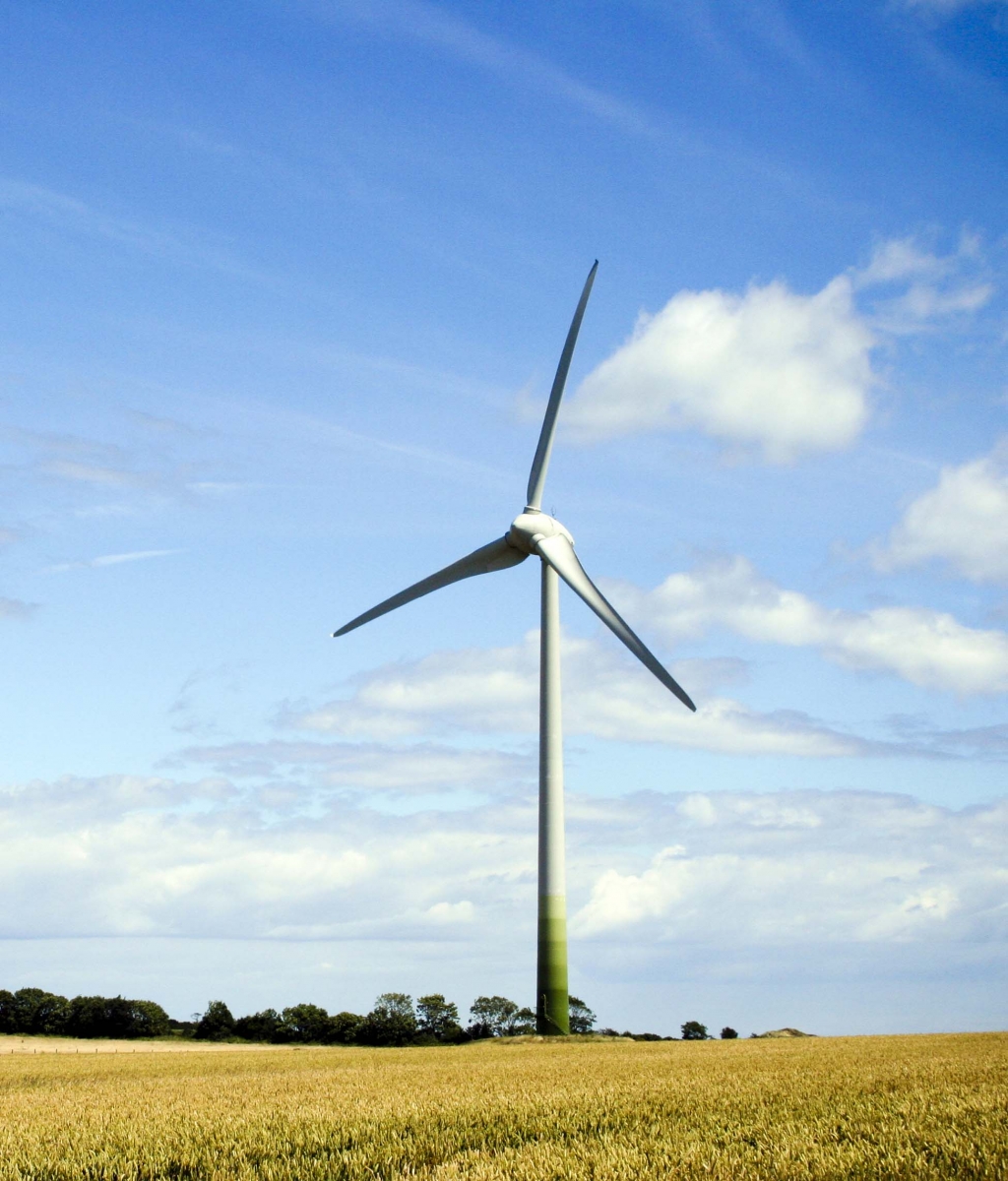
Long term, farm owners might consider investing in wind energy to reduce their carbon footprint.
Replace all incandescent light bulbs with compact fluorescent bulbs. According to manufacturers’ guidelines, a 13 watt compact fluorescent bulb (CFL) gives the equivalent power of a 60 watt soft white incandescent bulb and lasts eight times longer with a lifespan of 8,000 hours. A 26 watt CFB gives the equivalent power of a 100 watt soft white incandescent bulb and lasts ten times longer with a lifespan of 8,000 hours.You may want to start with something as simple as changing light bulbs but you might also want to explore the long range benefits of solar, wind, or microhydro (local creek-flowing water also known as run-of-the-river hydro) power sources.
Changing the way you light
CFLs generate 70 percent less heat and can cut associated energy costs. When you use less energy, you lessen greenhouse gas emissions in the atmosphere. Every CFL can save over 200 kg (450 lbs) of emissions from a power plant over its lifetime. There is one note of caution: CFLs do not work as well in cold temperatures. According to a spokesperson at General Electric Lighting, their product will not work in temperatures colder than -15 degrees Celsius (five degrees Fahrenheit). If you live in a region where you experience below zero winters, you might want to replace the CFLs with incandescent bulbs during the cold season. Check with your product supplier or manufacturer.
If others use your barn, post a notice on the board to remind everyone to turn off lights when they leave or when artificial lighting is not required.
Use dimmers and motion sensors on your barn lights. Both lighting options help you utilize electricity both for the minimum amount needed and only when needed.
Finally, try to maximize the use of natural light as much as possible. During warm or dry days, doors and windows can be open to provide ventilation, fresh air, and daylight.
Conserving energy
Replace the old barn fridge with an Energy Star model. Turn down the temperature on the hot water tank and wrap it in an insulation blanket. Insulate water pipes to prevent heat loss. Reduce drafts and make sure doors and windows fit properly during the colder months. Take steps to make your barn tight and snug. If you have a larger barn housing a number of horses, it is surprising how much their natural body heat will provide warmth to the ambient air. Make sure you are not running the heater unnecessarily high.
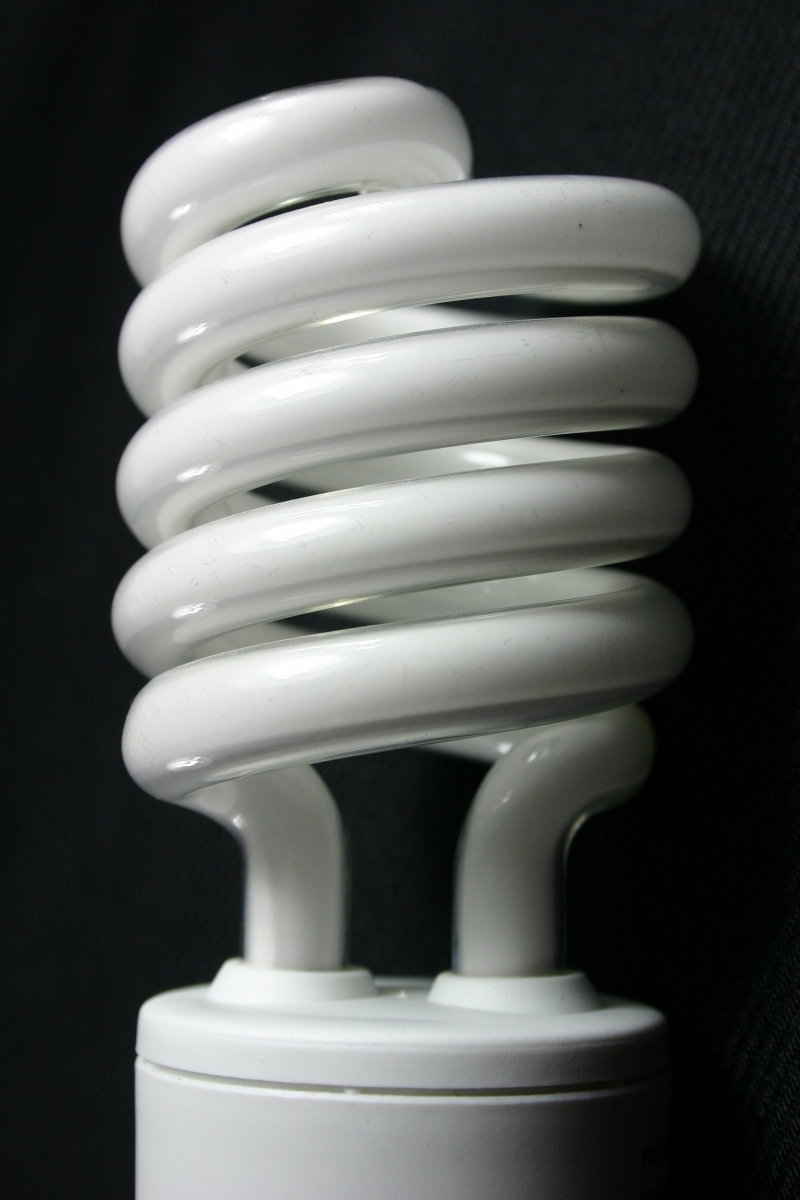
Change light bulbs from traditional incandescent bulbs to compact fluorescent bulbs, shown here. Compact fluorescents use significantly less energy and generate 70 percent less heat than incandescent bulbs.
Weed control and cleanlinessFor heated arenas, consider installing energy efficient fans to move the heat around more evenly. Check the roof for leaks and, if appropriate, consider insulation to keep heat in and reduce the dependence on electrical heaters.
Keep the area around your barn area weed free to control rodents, pests, and ground-nesting insects such as wasps or bees that are a health hazard to animals and humans, especially people allergic to bee stings. You can safely pull weeds by hand or use sheers or a scythe rather than using power tools. Check out the safety of biological controls.
Keep your facility clean and tidy. To prevent accidents, set aside designated areas for tools and equipment away from areas of horse traffic. By preventing accidents you prevent the need for a vet call and medications. What has that to do with emissions? It’ll save a drive for the vet and save the need for you to buy medications that have already left a carbon footprint through their manufacture and transportation from elsewhere in the country. Not to mention, of course, the savings in the pocket book.
Control of rodents, waste, or spoilage
Rodents get into grain, chew wood and baler twine, and nest in insulation. An infestation often leads to waste and spoilage requiring repairs or items having to be thrown away. Directly or indirectly, the impact of rodents wastes money, wastes time and wastes energy. They should be controlled either with traps or poisons that don’t harm pets, wildlife, or the environment. Ideally, practice proactive prevention. To protect grain, store supplies in metal garbage bins with tightly fitting lids and keep supplies in sealed cupboards.
Conserve water
Keep taps and hoses turned off when not in use and check them regularly for leaks or drips. Roll up hoses. Collect rain in barrels and keep it for replenishing water troughs or topping up water buckets in the barn. Use discarded water on flower beds or around the garden. Barns are home for many birds so keep a shallow water dish for them too.
Consider how often you need to wash your horse. Is it really necessary? Can you do it with less water? For example, a sponge bath rather than a full hose-down? Unless your water is on gravity feed, each time you turn on a tap, an electric pump is running somewhere and, with it, a power plant.
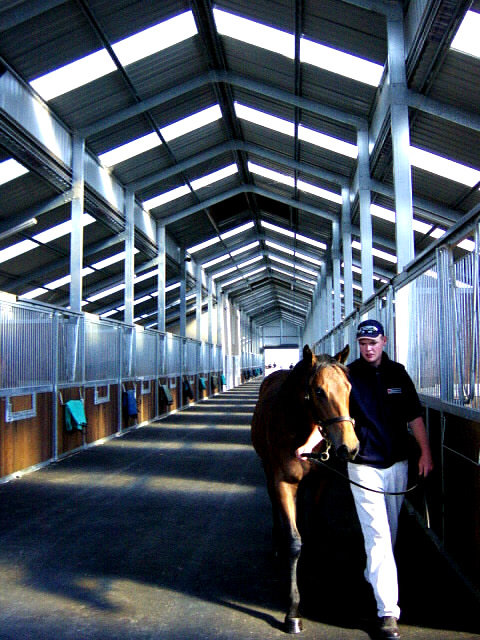
Keeping a barn clean and tidy can help the environment by avoiding unnecessary veterinarian visits caused by debris or infections.
Make sure that your water pump is running efficiently. If you have a bathroom in your barn, consider installing a low flow toilet.
Keep equipment tires properly inflated. Match the size of your implements and attachments to the size of your tractor. Follow all maintenance schedules for oil and filter changes, lube jobs, and engine checks to get the maximum performance from your investment with the minimum energy requirement. Recycle used engine oil according to the bylaws of your municipality. Avoid unnecessary idling of vehicles, tractors, or power tools. When fueling up, use a funnel to avoid spilling and wasting gas or diesel fuel.
Recycling manure
Horse manure composts into excellent fertilizer that can be used on gardens and hay meadows in place of commercial fertilizers produced with fossil fuel energy. Horse manure needs to be covered to prevent leaching by rain and should be turned regularly or aerated with perforated PVC pipes to release gases. Left for several months, it will break down into rich black soil. If you are unsure how to manage your manure, provincial ministries of agriculture can offer guidelines. The Langley Environmental Partners Society (www.leps.bc.ca) also offers an extremely useful horse manure composting program and information.
Phil Wilford, President of Langley-based GreenScene Pellets Inc., has developed a method to turn horse manure into bedding material or fuel pellets for greenhouse burners. For decades, equestrian barns and race tracks only managed their manure by piling it then having it trucked away to landfills. But stockpiled manure is smelly, attracts flies, and is an environmental contaminant since leaching threatens ground aquifers.
The benefits from Wilford’s innovation are wide-ranging. The heat generated in the drying cycle kills all pathogens resulting in a cleaner, safer product. Carbon dioxide emissions from the processing in the plant meet or exceed all air emissions requirements. The process removes manure odour. It is cost effective and requires only one person to operate the plant. Portable dryer/shredders can move from farm to farm to process manure when required which will be effective for smaller farm operations. Manure, as a commodity, will have a value-added potential as a marketable product.
With the cooperation of Crescent Stables in Ladner, BC, GreenScene tested its first full-scale system and the dried material proved successful as bedding. Since then, four major facilities including show barns and Hastings Park Racetrack have shown interest in installing a plant while another six stables are looking at a cooperative arrangement for a plant shared between them. The cost of a plant varies from $550,000 on a lease arrangement up to $1.5 million for a large operation. Wilford is continuing research and development to refine the system and his company recently received a $50,000 grant from the BC Agriculture Council through its Agriculture Environment Initiatives program.
Reduce transportation costs and emissions by buying hay in bulk right from the field. Photo: Robin Duncan Photography
Bulk buying of feeds
Given the soaring cost of transportation and the vagaries of weather patterns from drought to summer storms across Canada, the cost of hay has spiked. In addition, some farmers have turned hay fields into grain crops to capitalize on biofuels. As a result, future hay supplies could be pricey and unpredictable.
It therefore makes sense to get a head’s up on hay supplies and arrange to buy in bulk to stock up on winter supplies. If possible, deal directly with a farm and, if you have storage space, buy in quantity to reduce transportation costs. Perhaps you are able to share a trailer load with several horse-owning neighbours so you can split delivery costs and further lower emissions by reducing transportation needs.
The same holds true for grain and straw. Changing weather patterns and grains grown for fuel ethanol rather than livestock feed could affect future supplies and therefore price. Prudent buyers will be putting away stocks for the cold months.
Trailering horses to clinics, shows and competitions
For many, the highlight of the riding season is going to clinics, shows, and competitions. But the fuel costs of trailering horses have become significant. It makes sense to offset those costs and cut emissions by trailering someone else’s horse to the same activity.
People are starting to consider replacing their existing car with a hybrid vehicle. If you are in the market for a truck upgrade, check with your local dealer to find out developments on fuel efficient trucks. Diesel trucks will run on biodiesel but you need to know the availability and supply of new fuels as they come on the market (such as those with higher levels of ethanol) and how compatible they are with your vehicle.
Speaking of vehicles, why not get out of it whenever you can? If you board your horse close by, walk, jog, or cycle to the barn; and if the show is local why not ride there?
Buy local, support craftspeople
When you next buy tack, saddle pads, blankets, grooming tools, or anything else, inquire where they are made. Whenever possible consider supporting locally produced materials or goods made by craftspeople in your own province. You’re not only supporting local talent but you are also reducing emissions by avoiding long distance shipping.
Recycle, reduce, reuse
Have you ever wondered what to do with all that baler twine and agricultural plastic? Don’t toss it into the landfill. Much of it can be recycled or reused. Check for local recycling programs or pilot projects in your area.
The majority of agricultural plastics such as twine, bags, and bale wrap can be recycled.
Plant trees! Trees not only provide an effective wind break and perfect shade for horses, but they are nature’s natural carbon sinks. Trees are 50 percent carbon. As they grow they capture (sequester) CO2 from the atmosphere then, through photosynthesis, convert it to carbon-based tissues and use it in their metabolism and structure. Trees release oxygen as a byproduct. The CO2 remains in the tree until it dies through decay, fire, or harvest. According to the Royal Forestry Society, a healthy, young-growth Douglas fir forest can capture four metric tonnes of carbon per hectare per year.Make it a goal for your barn to be garbage free. It can be done. If you haven’t already, obtain recycling bins and encourage everyone in your barn, and your family members to recycle plastics, tins, and newspapers. Empty containers (coffee cans, milk jugs, margarine tubs) can have a new life in the barn, shed, tool room, or garage as storage containers. Check with your vet on how to dispose of unused medications. Discarded fabrics, leathers, or other materials may be useful for thrift stores. If you have surplus used tack and barn tools, donate them to the local therapeutic riding facility or host a tack sale. The rule of thumb is not to throw anything away until you have explored all recycling options.
Give back to the planet
In many ways, reducing emissions is not too much of a step from a waste-not-want-not philosophy. No matter what works best for your own situation, everyone in the horse industry has a responsibility to do their part to reduce CO2 emissions and contribute toward a cleaner, cooler world that can be enjoyed by horse and human alike.
For more ideas and information on reducing energy consumption, visit:
EA Ltd.: www.energyalternatives.ca
Natural Resources Canada: http://www.nrcan.gc.ca/home
BC Hydro PowerSmart: www.bchydro.com/powersmart
NS Power Efficiency Tips: http://www.efficiencyns.ca
Manure Composting: www.manuremaiden.com
Alternatively, check the environment ministry of your own province for information on energy smart guidelines and opportunities.
Main photo: All horse farms, whether small or large, are big energy consumers with huge carbon footprints. Fortunately, there are a number of simple ways to reduce the equine industry’s consumption of energy.



